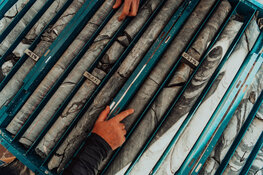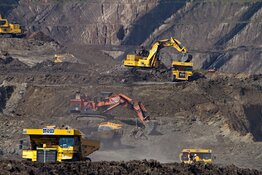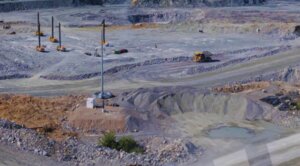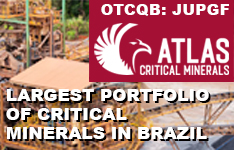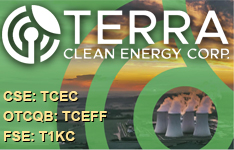Jared Sturdivant: We are an investment fund, really a hybrid between private equity and a traditional hedge fund. We take a long-term approach to investing in public equities and pre-IPO private situations, as well as distressed debt or structured financings. Our investors have to be qualified.
TGR: Because you delve into private equity, do investors have to commit for a predefined period of time?
JS: Yes, we basically have a three- and five-year class. Generally, anything we own that is private is on its way to becoming public within 12 months or so; or in the case that it's a debt security, matures within roughly 24 months.
TGR: So, you don't commit to liquidate the fund at some future point?
JS: No. It's an open-ended fund structure.
TGR: How did you get interested in private equity?
JS: My background is in bankruptcy and distressed investments. When the world started melting down in 2008 and 2009, we saw a real opportunity to buy great assets ahead of what we thought would be the perfect storm for an inflationary environment down the road. We decided to focus on hard, tangible assets—metals and mining, energy, real estate and infrastructure.
A lot of the traditional folks who invest in public markets typically can't do illiquid investments. We wanted to structure a fund that could capture what we saw as a big part of the value chain, which is to own something that may be a little illiquid (quasi-private) or pre-IPO.
We also structure credit investments. A lot of times that involves structured, one-off financing that requires the ability to hold something illiquid. That's really how O-Cap has gotten to my areas of interest. I've always had a fascination with investing and kind of cut my teeth on the distressed side, where we looked at companies that may have great assets but a bad balance sheet.
TGR: One more question about private equity before we move on. Is the main advantage the fact that these firms don't have to report to investors every 12–13 weeks?
JS: Yes, it's a big advantage. When a company is public—for better or worse—Wall Street's always knocking on the door. It always has to be aware of what Wall Street is saying. They have to hold conference calls. Some public companies take on the burden of giving guidance, which is a bit of a distraction when it comes to running a business. We like it when we have great management teams that can really focus on operating assets instead of meeting the latest Wall Street estimates.
TGR: As I understand it, distressed opportunities could appear either as private or public equity. Do you have a favorite type of distressed asset?
JS: We love what we call "good assets, bad balance sheets" companies. When you restructure or recapitalize these companies, you can really garner a lot of value. You can right-size the company's balance sheet with its assets. We've seen, over time, that you can create a lot of economic value for shareholders. Part of it has to do with timing. We really like to be the last dollar or financing before a mining company moves from exploration to production and, therefore, self-funding.
TGR: Those are stories where you have to go in and create the value. Is that right?
JS: Yes. You buy deep-value assets that wouldn't have value if you weren't restructuring the balance sheet. But a big part of the value-creation process is how the debt is restructured.
TGR: Do you short stocks?
JS: We do short stocks. I'd say the predominance of what we do is long biased.
TGR: Do you use derivatives?
JS: We do a little bit. Not a whole lot.
TGR: What's the first thing you do when you're beginning to perform due diligence on a new company?
JS: When we come across a company that we think is interesting, we do a data dive. We read the 10K and the Q and read as much as we can about the company. We read all the analyst reports, and then we set up a call with the management team. That's our basic approach.
TGR: How often do you get to that point and realize you'd like to replace a company's management?
JS: Unfortunately, we do come to those situations. I'd say 10%–15% of the time you come across situations where management is sort of the issue. From that point, you have to decide whether to go ahead with a bad management team, try to effectuate change or pass.
TGR: For the rest of our conversation, I'd like to talk about public companies because those could be of value to our readers. Do you have examples of companies that meet your criteria that you've taken a chance on?
JS: Sure. We look for two underlying components in an investment: Value and a catalyst. Typically, the catalyst is a restructuring of some sort. One company on the gold-/silver-mining side is Comstock Mining Inc. (OTCBB:LODE). What was interesting about Comstock (formerly known as GoldSpring) is that it had assembled a large area of land around the historic Comstock Lode Mining District in Nevada. Since the 1800s, that district has produced 8 million ounces (Moz.) of gold and 190 Moz. silver. Comstock put this big property together through debt financing. However, it was a penny stock and it was headed for bankruptcy.
Then, an investor by the name of John Winfield bought up a lot of the debt, consolidated and converted it into a preferred structure. He could've filed bankruptcy for Comstock but restructured the company and kept it public instead. He effectively transitioned that debt to a preferred stock, which prevented a Chapter 11 process. Shortly thereafter, the company did a major refinancing. It financed US$35M of new convertible preferred stock to outside investors. This, along with hiring new CEO Corrado De Gasperis, was a major game-changer. It saved the company from bankruptcy.
Corrado laid out three aggressive targets, which we thought were very attractive. The first was to increase the gold-equivalent ounces (Au Eq.) from 1 Moz. to +3 Moz. The second was to enter production in the second half of 2011. And, the third was to get 2012 production up to 24 Koz. Au Eq.
What we really like about the situation is that you're buying an exploration company that is converting to a producing company that's growing resources substantially. We think it will have cash costs of $450–$500/oz., so Comstock could do US$20M in cash flow next year very easily. And, the company's got two projects. The Dayton Phase 1 drilling program is now hitting bonanza-type grades, so there's a lot of resource upside as the property continues to get drilled.
We looked at this and said, "Wow this is interesting." Not only do you have a company going from an explorer to a producer, but also you have a new management team with great plans for a resource upgrade. Comstock also has an AMEX listing coming in May, which is another tangible catalyst.
When you look at the valuation, if Comstock gets valued like a producer, you've got multiple upsides from here. If the company continues to grow the resource base, once it starts producing 3, 4 or 5 Moz., Comstock really starts showing up on the radar of acquirers. We think that's attractive.
TGR: Will Comstock have to go back to the market for financing?
JS: No, the company is fully financed. Its last financing for US$35M provided all the financing it'll need to take Comstock through production and even provides another US$15M for additional exploration. If this company gets valued at US$200/oz., which is pretty conservative, and gets to its 3.25-Moz. target that Corrado set, you're talking about a US$7 stock.
TGR: And that would be before a takeout premium.
JS: Right, that's not a takeout premium. What we saw is a situation wherein a company was transitioning from an exploration to a production company and had restructured its balance sheet with no further capital needs. That gives you a chance to be the last dollar in before it makes that transition. We think Comstock will be valued like a production company, eventually, and you're going to get that upside. So, we're pretty happy with that transition.
TGR: Is there any significant risk?
JS: Anytime you're with a resource company, it's probably not a good thing if the commodity price goes down. We think this project has been derisked. It is in a historic mining district that has produced a lot of resource, and recent drilling has firmed up the resource base. We don't think there's a lot of risk to the resource per se, but commodities always carry risk.
TGR: Assuming, for the sake of argument, that gold could slide to US$1,000/oz., could Comstock still have upside?
JS: Yes. When your cash costs are US$450, you've got a big margin and you're a relatively low-cost producer.
TGR: Very good. Can you tell us about another opportunity that meets your criteria?
JS: Sure. One company that's a bit of a complicated situation is Palladon Ventures Ltd. (TSX.V:PLL). This is an iron ore holding company that owns a minority position in CML Metals, Inc. (a private company). CML Metals has the largest and highest-grade iron ore deposit west of the Mississippi. Its Iron Mountain project is located west of Cedar City, Utah. Again, it's another historic mining district that used to be controlled by U.S. Steel Corp. (NYSE:X) and the Geneva Steel Mill. Since 1869, 80 million metric tons (Mt.) of iron ore have been pulled out of this project. It has a great asset base. Palladon has resources of 40 Mt., grading 45% iron at its Mountain Lion deposit. The company has an even larger +100 Mt. resource at some contiguous deposits.
Up until March 2010, this was a bankruptcy candidate. It had great assets but, due to a previous CEO who had a habit of overpromising and under-delivering, the company took on debt and didn't execute on the logistics to get the ore moving. Eventually, it defaulted under its term loan. The term-loan owner did a debt-for-equity exchange, which diluted the public shareholders. Now, the original shareholders own a minority piece—roughly 18% of the actual assets.
TGR: This is quite diluted. So, the only way to play it is to own the holding company?
JS: That is correct. You need to own the holding company. So now, Palladon has no debt because the exchange took care of it.
I should say that the company is shipping run-of-mine ore. It's just pulling it out of the ground and shipping 2 Mt./year and making a little money on that. Palladon also has first-class partners; it ships to Chinese counterparts that market to Chinese steel companies. And it ships out of the West Coast, using Union Pacific as its rail line—all top-notch partners.
Recently, the company announced new financing by Credit Suisse to build a concentrate plant onsite. When it gets this asset in place by the first quarter of 2012, it should have positive cash flow and will make a margin of US$60 –$80/ton. With that kind of margin on 2 Mt., you have a company doing US$120M–$160M of EBITDA (earnings before interest, taxes, depreciation and amortization).
Even when you adjust for today's ownership of just 18% of that, you're buying in at about 1.5x EBITDA. This is for a company that we think is highly attractive as an acquisition candidate, as well. If you look at Cliffs Natural Resources Inc. (NYSE:CLF), which recently announced the acquisition of Consolidated Thompson Iron Mines, Ltd., another iron ore company, for about 6.5x EBITDA, we think there's tremendous upside here.
TGR: So, how much will its margins increase by owning more of its own supply chain?
JS: Currently, the company's margins are roughly US$5–US$10 per ton. That will go to US$60—$80/t by owning the concentrate facility.
TGR: Very interesting. Any other names you'd like to mention?
JS: For those who are willing to look at pure exploration companies, we think Paramount Gold and Silver Corp. (TSX:PZG; NYSE.A:PZG) is attractive. Last year, the company bought X-Cal Resources, which brought it the historic Sleeper Gold Project in Nevada. Its other asset is the San Miguel Project, in about 465,697 acres in the Sierra Madre Occidental Gold and Silver Belt in Mexico. San Miguel has a resource of about 2.6 Moz. of gold. Coeur d'Alene Mines Corp. (TSX:CDM; NYSE:CDE) is developing a contiguous property with 3 Moz.
We think the Sleeper Project has a lot of blue-sky potential and has the potential to hit real bonanza grades. An interesting little tidbit is that the Sleeper Project owns the water rights to Fronteer Gold Inc.'s (TSX:FRG; NYSE.A:FRG) Sandman Project, which Newmont Mining Corp. (NYSE:NEM) just bought. When you look at the total combined resource of nearly 5 Moz., we think Paramount will make a nice takeout candidate for Newmont, Coeur d'Alene or another company down the road.
TGR: So, Paramount has the geographic tie-in. . .
JS: Right. It's in the mining-friendly districts of Nevada and the San Miguel district of Mexico. The properties are contiguous to two large companies that we think would consider the company an attractive acquisition. We're seeing that big companies like Newmont need to feed their mills. They have to do acquisitions to keep their mills active. It's a big operating cost to have a mill that's not running at full capacity. That is one of the reasons we think Newmont bought Fronteer's Sandman Project. Paramount is a little more speculative, but we think it has a lot of potential as an exploration-upside takeout candidate.
TGR: Why do you consider Paramount more speculative?
JS: Paramount will need another financing round, at some point. It's a pure exploration company, and exploration companies have a habit of spending cash and needing more.
TGR: You have a very interesting business model, Jared. I hope we get another opportunity to speak with you in the future.
Jared Sturdivant is portfolio manager and managing partner of O-Cap Management, LP, an opportunistic investment vehicle focused on special situations investing in both public and private markets. The firm has ownership interests in the U.S., Canada, Brazil and Western Europe, with a particular focus on hard-asset industries, including energy, metals and mining, infrastructure and real estate. Previously, Mr. Sturdivant was a managing director at JANA Partners, a multibillion-dollar investment fund, where he focused on global special situations and distressed investing. He graduated with a BA in finance from the University of Texas at Austin.
Want to read more exclusive Gold Report interviews like this? Sign up for our free e-newsletter, and you'll learn when new articles have been published. To see a list of recent interviews with industry analysts and commentators, visit our Expert Insights page.
DISCLOSURE:
1) George Mack of The Gold Report conducted this interview. He personally and/or his family own shares of the following companies mentioned in this interview: None.
2) The following companies mentioned in the interview are sponsors of The Gold Report: Comstock.
3) Jared Sturdivant: I personally and/or my family own shares of the following companies mentioned in this interview: Comstock, Palladon and Cliffs Natural Resources. I personally and/or my family am paid by the following companies mentioned in this interview: None.

